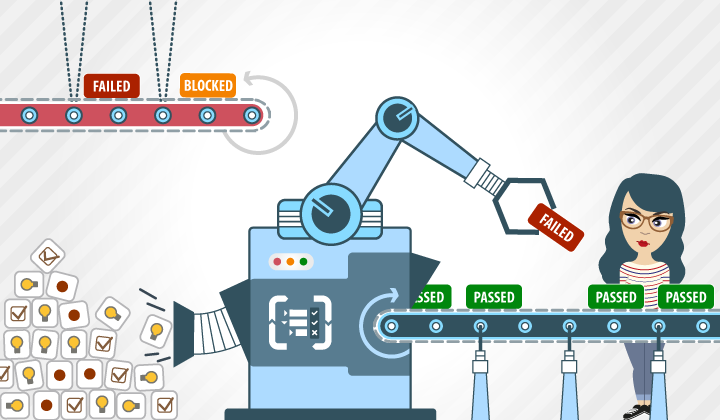QA tends to be focused on measuring and analyzing the quality and enhancing the software through process enhancements, thereby managing the release to consumers.
Although
automated software testing services normally do take place in this industry, the main aim of QA is on the processes and procedures of how software development activities take place.
QA is more focused on managing the product lifecycle and checking that the software meets the defined quality requirements or consumer agreements.
QA is less about breaking the software and finding issues than about verifying that it is possible to make the software work under a given set of conditions.
Here Are Three Best Practices For Getting The Most From Your Agile Efforts And Your Outsourced QA Testing.
Create A Clear Separation Of Testing Concerns
A difficulty with marrying Agile practices and offshore arrangements is that when there is a single deliverable that requires to be developed (onshore) and tested (offshore), you are adding in another step to be able to deliver a "potentially shippable" product. With every problem, you add 24 hours of delay. No good.
The option is to build a clear separation of testing concerns. Engage onshore developers for verification testing via automated unit tests (using a xUnit framework). Engage offshore testers for validation testing (e.g., performance, integration, exploratory testing).
This will eliminate waiting for initial verification testing, but still ensure the more robust validation testing still happens, utilizing your offshore testing specialists.
Improve Communication And Decrease Hand-Offs
Use video technology to bring the distributed team together. While email is absolutely fine to fill in the gaps and give additional detail. There is nothing that can replace face to face interaction.
Using tools like Google Hangouts or Skype, you can approximate the high bandwidth communication that you get with co-located teams.
Enforce Modern Engineering Practices
Organizations tend to focus more on "process" based solutions when there are various technical solutions to allow you to get the most from your offshore partnership. Two important engineering practices are continuous integration and automated unit testing.
Continuous integration represents a practice by which code is integrated and a new integrated build is created upon each check-in.
This assures the system is always stable and any integration related issues are immediately visible. Tools such as Jenkins, Bamboo, CircleCI, and Team Foundation Server can help with continuous integration.
The following are the QA outsourcing challenges
Maintaining customer satisfaction:
Clients mainly concentrate on this challenge and this is the company's main objective in outsourcing. So the company must reach the benchmark level in achieving the outcome.
If the company is doing better infrastructure new technologies and IT-enabled services and all other software preservation services in developing and the critical project then automatically there will be client requirements.
Contract design:
This is the major challenge in outsourcing because the objective lies in the contract that is given to the vendor.
First, the contract is to be designed perfectly and must be explained to the vendors in an easy manner for accomplishing the goals of outsourcing. It involves software maintenance services, infrastructure, and technologies that are to be provided. You can also hire best-
automated software testing services via various online resources.
Cultural barriers:
This is one of the main QA outsourcing challenges. There must be right cultural barriers between the people because the operating procedures vary from one company to another. Language and work ethics must be taken into consideration.
QA outsource Problems:
System access and security
Access to the customer systems by the QA outsourcing requires being considered in the context of current New Zealand privacy legislation, which is designed to protect personal information about identifiable people.








